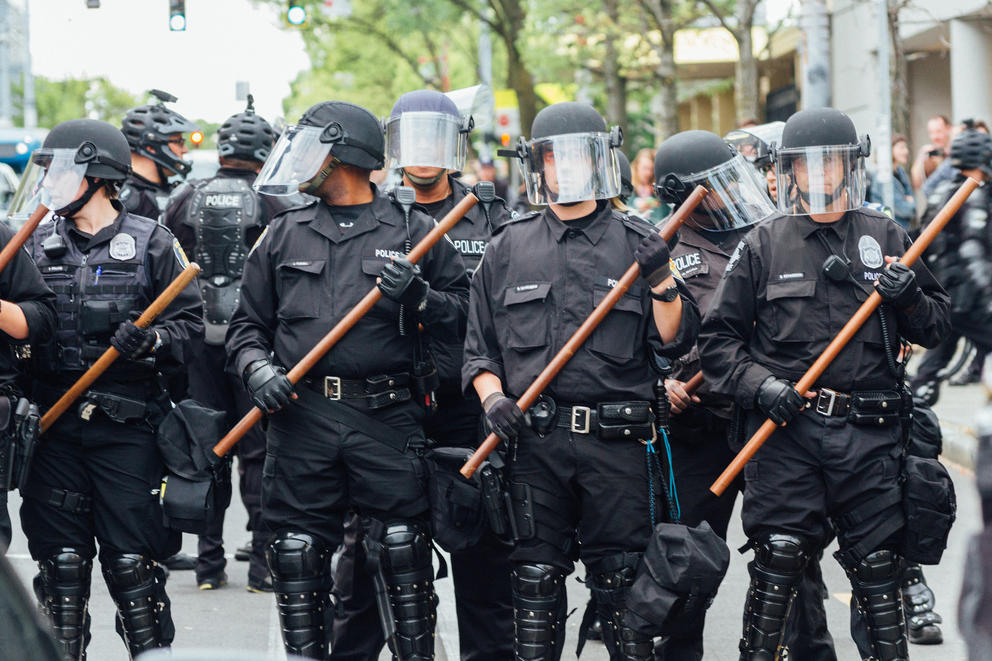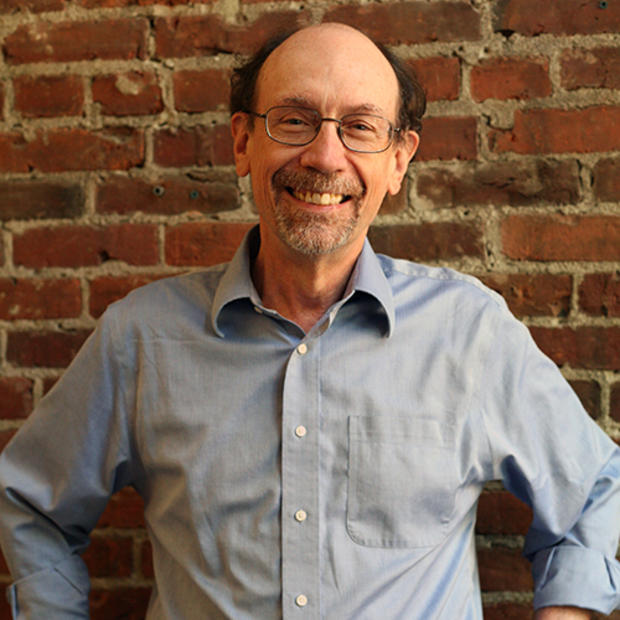Following a rough few weeks that saw a court ruling against the police chief and the resignation of the head of the police union, police reform in Seattle hangs in the balance.
This current round of reforms was spurred by federal findings that police regularly engaged in excessive use of force, and that there were indications of biased policing. The reform effort faces a critical juncture on Aug. 15, when the federal judge overseeing it has scheduled a hearing on moving forward with potentially wide-ranging ordinances to reform police administration, discipline and oversight.
The hearing follows a rough summer for the reform effort. Among the more serious stumbles recently have been a jury finding that Police Chief Kathleen O’Toole retaliated against two officers who complained about apparent favoritism in overtime assignments. While other city officials have leaped to her defense and the city attorney has promised to fight the decision (on which not all jurors agreed), it cast questions about how well she is sorting through long-neglected internal problems.
A police union leader, who had taken an active role in reform issues, was ousted in the wake of a hasty tweet that seemed to blame the Black Lives Matter movement for the shooting of officers in Dallas. Members of the Seattle Police Officers Guild also rejected a contract that contained some modest steps toward greater accountability. Mayor Ed Murray proclaimed the rejected contract as the best in city history for getting control of the department, something that is surely true, given the sorry state of management authority over the years. But the mayor may have also undercut his own ability to bargain with the guild by proclaiming, ahead of time, his own commitment to a significant increase in the size of the force — and, therefore, the union's membership.
Now comes a surprise letter from the court-appointed monitor overseeing the reform efforts that appears to undercut the city’s desire to move ahead with reform legislation. The letter, which city officials hadn't expected, also suggests eliminating the Community Police Commission, a rather surprising idea given that the group has been praised nationally as an innovation.
In the letter, obtained by the Seattle Times, to U.S. District Court Judge James L. Robart, the monitor, Merrick Bobb, and his team outlined rather detailed ideas on new systems for oversight of the police. Included in the filing was a proposal to staff a revamped Office of Professional Accountability with civilians rather than reassigned police professionals. The Community Police Commission praised those ideas, which, as the Seattle Times noted, would mark a big step in terms of civilian oversight of SPD.
Bobb also outlined a strong plan for a new inspector general with broad authority to poke her or his nose into any problem areas with the Seattle Police Department. The city has been fortunate enough to have a former municipal judge, Anne Levinson, doing much of that work under contract. But Bobb’s plan would provide clearer institutional authority and some greater assurance of independence from political interference for anyone in the role who lacked Levinson’s iron will.
Still, some of the city discussions, especially within the Community Police Commission, have gone into much greater detail than Bobb’s plan. It comes up well short of some of the ideas already under city discussions for ensuring the independence of oversight, such as a suggestion that the mayor appoint the director of the Office of Professional Accountability but the city council should appoint the inspector general. Bobb's ideas also could have gone further in ensuring that budgets are protected from the tendency of Seattle politicians to neglect money for anything that makes them uncomfortable.
The commission clearly feels that an independent board of community members is, in some form, a necessary component of wider, lasting reforms. And systemic change is what they have been seeking. A member of the commission, Lisa Daugaard, said, "There is a difference between a 'mission accomplished' banner and real, deep change."
Seattle Mayor Ed Murray may well be glad to have the monitor take an aggressive stance, since the mayor raised the possibility of judicial orders accomplishing at least parts of the reforms that had been included in the rejected union contract. But it’s not all clear that even the often-tempermental Murray, who talks a good deal about community involvement, would really want to see the community commission eliminated.
Messy as it might be to let the mayor and city council to work out next steps on reform, the judge may well see value in instructing them to consider not just Bobb’s plan but also any other reform ideas before developing legislation.
Bobb’s ideas, though, certainly could help focus city decision makers. A City Hall source, who didn't want to be identified for fear of having her office brought into a political dispute, said it’s unlikely that Murray would actually want to abolish the community panel. But, the source said, Murray may well want to get some new people on the commission, which was created under his predecessor, Mike McGinn.
So, just looking from the outside, it’s possible to speculate that Bobb’s away-with-them-all proposal may serve as a negotiating tool that would ultimately shore up the mayor’s ability to influence the commission's makeup without turning it into a puppet.
The judge certainly can retain final approval over any key areas of reform. Indeed, as City Attorney Pete Holmes has suggested, leaving the process entirely to local politics could be disastrous. Last February, Holmes told the Community Police Commission, “I want to suggest to you, that as exasperating as the court may seem, this is our last best opportunity.”
That’s pretty dramatic language, but Holmes has seen enough to know that police reform has been a difficult issue for Seattle. In 2002, the City Council appointed Holmes to the first civilian board monitoring the performance of the Office of Professional Accountability.
It was a very rocky start up for the new effort, with police resentful of suggestions for improvement in everything from discipline to relations with diverse communities. But the city leadership had known for years that there were problems to address in policing and the use of force, especially in dealings with communities of color.
During the 1990s, the city brought in an innovative police chief, Norm Stamper, whose tenure included several tangles with the police union, including over what he saw as ingrained racism in police culture, and the WTO protests. The next permanent police chief, Gil Kerlikowske, was in many ways another reformer (especially on drug policy, going on to become President Obama's drug czar). As he left Seattle in early 2009, The Stranger credited him with some reductions in the worst use of force abuses — an issue at the heart of the federal consent decree.
But the gains were clearly modest, with OPA's first auditor, Kate Pflaumer, noting in a 2009 report that pedestrians frequently reported that police seemed quick to turn minor incidents into full-blown confrontations in which they forcefully subdued the person. Indeed, in a 2012 Seattle Times oped, Pflaumer and Terrence Carroll, who held an internal investigations position with SPD from 1982-1992, noted that they had frequently tried to get police leadership to institute training and policies to control the use of force — without great success.
All along, another key issue in federal oversight burned just below the surface for much of the white population: biased policing. Pflaumer's 2009 report documents repeated surveys showing that a majority of African Americans believed Seattle police engaged in racial profiling — a truth that, as a recent uproar over former King County Executive Ron Sims' comments about his own repeated stops by police suggests, is only now being accepted with difficulty by many people.
In the regular reports he files on the reform efforts, Bobb has documented considerable progress, and the court has approved new SPD policies and training practices on the use of force. The new accountability ideas he has outlined can move the city a good ways further forward. Even with the monitoring in place, though, the city continues to face fresh concerns about the use of force, including the fatal shooting of Che Taylor in February.
The issues around police reform have been around too long, however, to think that Seattle can maintain its gains without deep local involvement to go along with the federal oversight. The city's efforts, even in the administration of Murray, who campaigned on meeting the challenges, haven't matched what has been needed. Even having campaigned on the issue, the mayor hasn't, for instance, made it an object of intense, weekly focus by a deputy mayor, something that might have driven greater collaboration with community groups on wider aspects of police reform.
Next week, the judge has to consider how to make the best of all the ideas. Bobb's solutions are fine as far as they go, sometimes even innovative. But without the opportunity for political consideration of more robust options, crucial community buy-in might be lacking. The trick for Robart, then, will be finding a way to keep the process moving forward — with community involvement.


